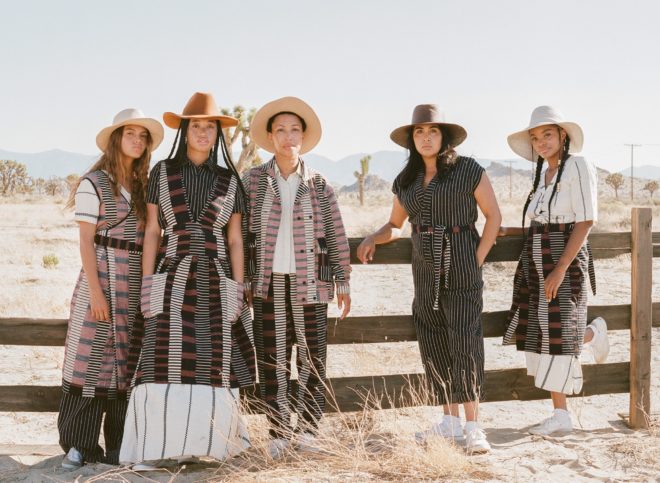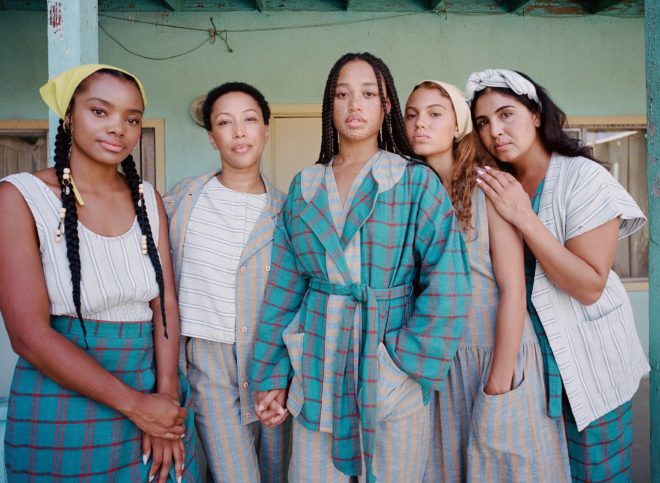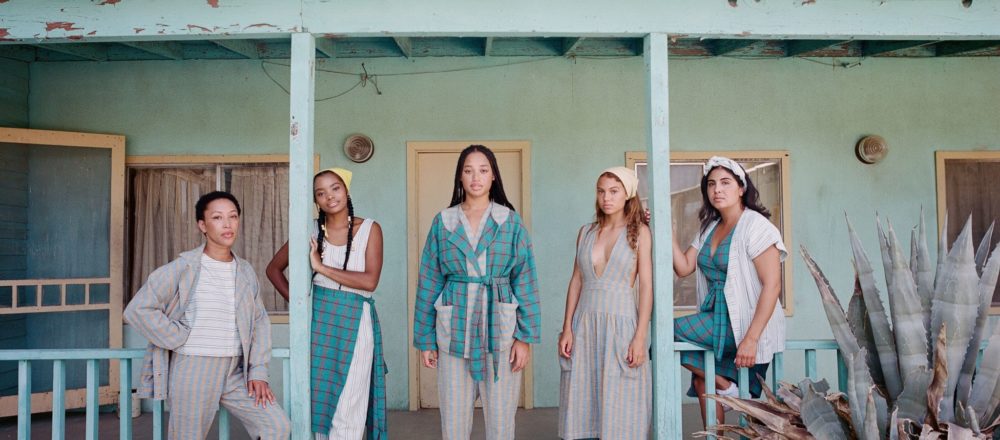An increase in consumer awareness about the human rights implications of fast fashion has see a growing demand for ethically produced clothing. New York based label ace&jig seeks to redefine the consumerist narrative of fashion by producing high end textiles whilst maintaining a commitment to zero waste and workers rights in their supply chains. They spoke to Right Now about their process of creating ethically made clothing.
Tell us a bit about your label. What drove you to take a sustainable, human rights based approach to high-end fashion?
ace&jig is a textile love story. We create effortless clothing from our own custom yarn dyed and woven textile designs, and partner with weaving experts in India to bring them to life on antique looms.
We knew from the start that we wanted our brand to be something we could stand behind in every aspect, from soup to nuts! Our values and our love of textiles are the beating heart of our work. We also felt and continue to feel a responsibility to participate in changing the narrative of fashion from one of consumption to one of love and appreciation of the artistry behind textiles and garments, and respect for those who bring them to life. We wanted to take that fleeting moment of excitement you have when you purchase something ‘Fast-fashion’ and extend it over a lifetime (or two!). Ideally our garments are kept things, treasured and worn many times, or passed down. Extending garment lifespan is one of the most important things we can do to reduce textile waste.
Have you seen a shift in consumer demand for ethical fashion over your time in the industry?
Yes, definitely! Especially in the last few years, we’ve seen the beginnings of a shift away from fast fashion. Our escalating climate issues are making it more and more imperative that we change the fashion business model. We’re encouraged to see many more brands taking steps towards a more circular model that creates less waste.

What specific measures do you take to ensure your clothing is produced with respect for both sustainability and the rights of your workers in India?
One of our big commitments is to creating zero waste. We find creative uses for all our remaining scraps. Our largest and most heartfelt no waste project so far is our ace&jig Community Quilt. We sent hundreds of volunteers from our community bundles of our leftover scrap fabric. From these scraps, each created one-of-a- kind quilt squares, then sent them back. From these squares, we created 13 jumbo quilts! Each one is a testament to our amazing community and to the 9 plus years of textiles that we have created.
Our Indian partners also have very high standards of sustainability and the wages, benefits, hours, health, safety, and childcare of their employees. They share our values and practice the holistic kaizen philosophy of always continuing to improve. They employ 90 percent women tailors, and all employees benefit from free childcare and fresh produce grown on site with reclaimed water. We visit them yearly and are always encouraged by the measures they have taken to continually up standards for their team, process, and workplace.
How do you ensure transparency across your supply chains as your business expands into new markets?
We’ve worked with the same manufacturer for 10 years! What we make is very specific and detailed, and unlike other brands, we work closely with one family-owned business. So supply chain transparency, for us, is all about maintaining and caring for that relationship. We are in constant communication with them, and our mutual commitment to making things well, taking pride in what we make, and standing behind how we make it is essential to our business.
Lastly, can fashion ever be truly sustainable when it is inherently about consumption?
Tough question! Truly sustainable fashion would need to meet a few different qualifications. If a piece is made from natural or recyclable content, in a way that limits negative environmental and human impact, this is a start. From there, if it can be made to last, repaired when damaged, and then, after decades of love and use, repurposed or recycled once more, then we’d consider this truly sustainable! It’s all about closing the loop, and we’re constantly looking for and trying out new ways of doing this.



